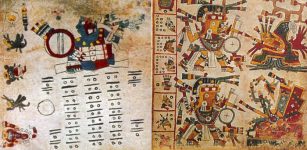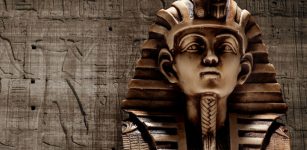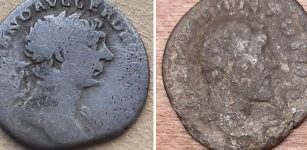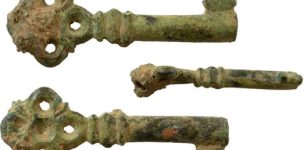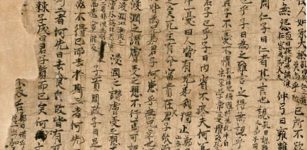Clay Cylinders With Oldest Known Alphabet Unearthed In Ancient Syrian City Of Umm-el Marra
Conny Waters - AncientPages.com - What appears to be evidence of the oldest alphabetic writing in human history is etched onto finger-length, clay cylinders excavated from a burial site in Syria by a team of researchers from Johns Hopkins University.
Aerial view of Tell Umm el-Marra. Image credit: Johns Hopkins University
These remarkable artifacts, which have been carefully dated to approximately 2400 BCE, provide groundbreaking insights into the early development of written communication. This discovery suggests that alphabetic scripts were in use some 500 years earlier than previously documented examples.
Thus, these scripts challenge and potentially reshape current archaeological understanding regarding the origins and dissemination of alphabets. The discovery also encourages scholars to re-evaluate the development of early urban civilizations, offering a fresh perspective on their evolution.
Glenn Schwartz, a distinguished professor of a Near Eastern archaeology at Johns Hopkins University played a pivotal role in uncovering these clay cylinders, emphasized the transformative impact of alphabets on human society.
Clay objects roughly the size of fingers were discovered during a dig at the ancient city of Umm el-Marra. The engraved symbols may be part of the earliest known alphabet. Credit: Glenn Schwartz, Johns Hopkins University
"Alphabets revolutionized writing by making it accessible to people beyond royalty and the socially elite," Schwartz noted.
"Alphabetic writing changed the way people lived, how they thought, how they communicated." This newfound evidence underscores that ancient peoples were experimenting with novel communication technologies much earlier than scholars had imagined prior to this discovery.
Schwartz is scheduled to present a comprehensive account of his groundbreaking discovery on Thursday, November 21, at the Annual Meeting of the American Society of Overseas Research.
Schwartz dedicates his scholarly pursuits to understanding the development of early urban areas across Syria. His research delves into the intricate processes through which smaller cities emerged and evolved in this historically rich region, providing valuable insights into ancient urbanization patterns. In collaboration with colleagues from the University of Amsterdam, Schwartz co-directed an extensive archaeological excavation at Tell Umm-el Marra, located east of modern Aleppo in the Jabbul Plain of northern Syria.
Clay objects roughly the size of fingers were discovered during a dig at the ancient city of Umm el-Marra. The engraved symbols may be part of the earliest known alphabet. Credit: Glenn Schwartz, Johns Hopkins University
It was one of the ancient Near East's oldest cities, and today is recognized as one of the pioneering medium-sized urban centers that surfaced in western Syria during antiquity.
At Umm-el Marra, archaeologists unearthed tombs dated to the Early Bronze Age. Among these, one of the most well-preserved tombs contained six skeletons along with gold and silver jewelry, cookware, a spearhead, and intact pottery vessels. Adjacent to the pottery were four lightly baked clay cylinders that appeared to feature alphabetic writing.
"The cylinders were perforated, suggesting the possibility of a string attaching them to another object as a label," Schwartz explained.
"Consider this: they might describe the contents of a vessel, indicate its origin, or even identify its owner. While we currently lack the means to translate the writing, these intriguing possibilities invite us to explore further and uncover their true purpose."
Researchers employed carbon-14 dating techniques to accurately determine the ages of the tombs, artifacts, and inscriptions.
Schwartz pointed out that scholars once believed the alphabet originated in or around Egypt after 1900 BCE.
However, our artifacts are not only older but also come from a different region, indicating that the alphabet might have a completely different origin story than previously assumed.
Such compelling evidence invites us to reconsider and explore new possibilities about the true beginnings of written language.
Written by Conny Waters - AncientPages.com Staff Writer








